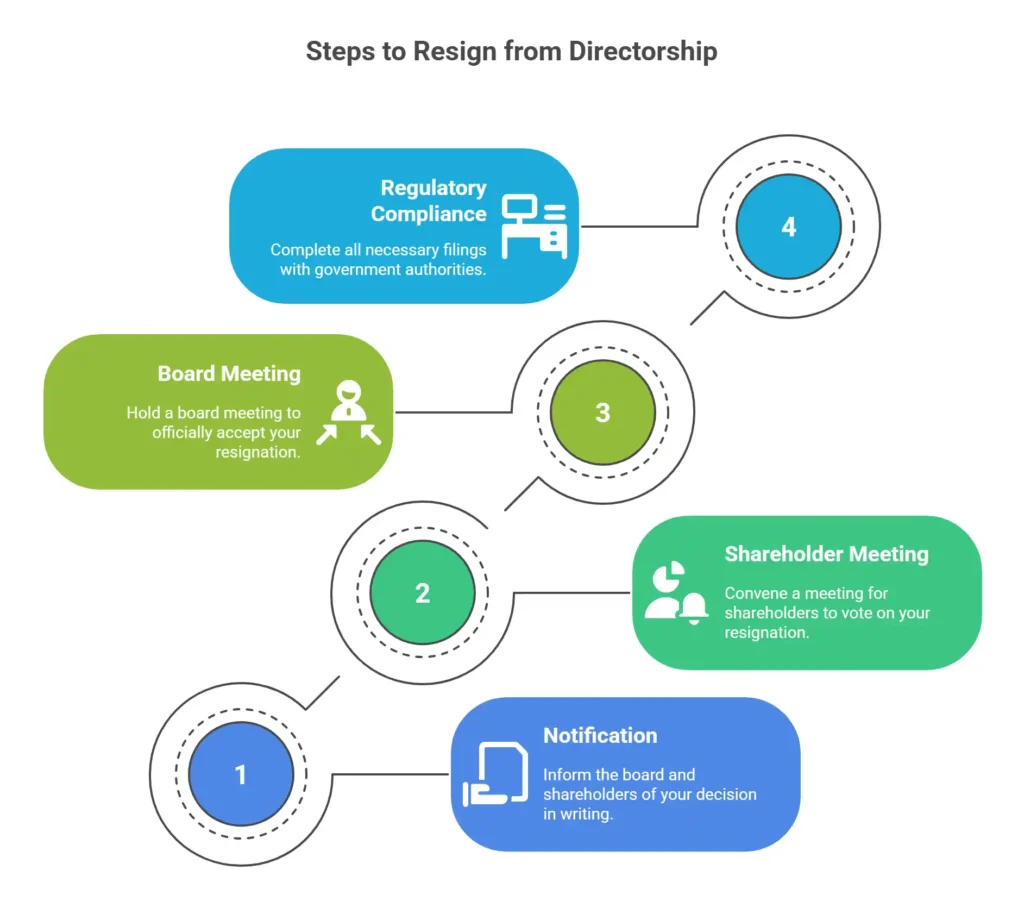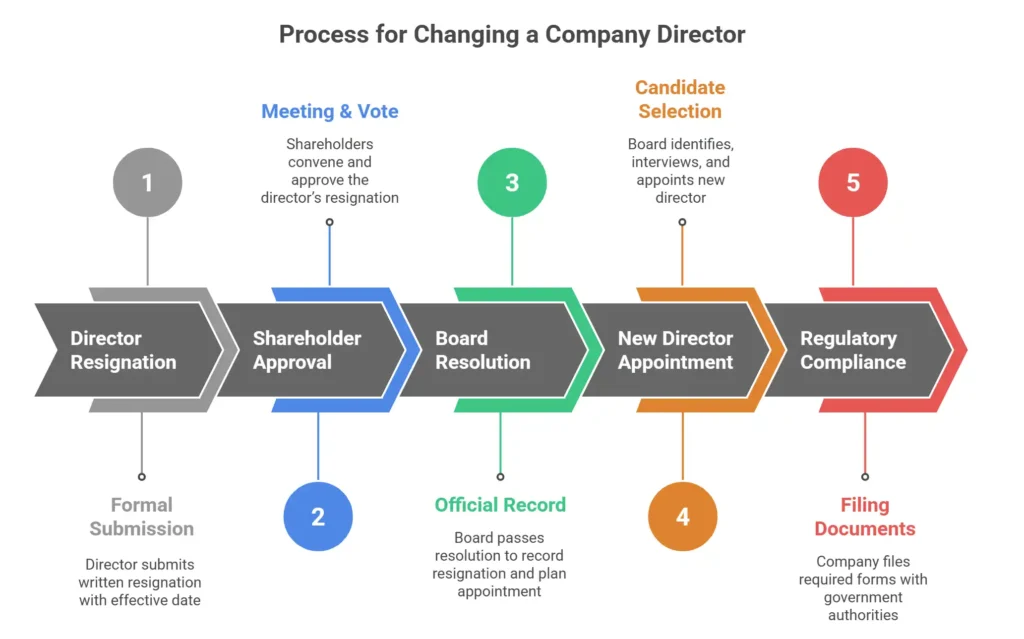In the world of business, change is inevitable. Companies evolve, and so do their leadership. Directors, who play a pivotal role in an organization, may sometimes need to step down, or new faces might need to take charge. This article will provide you with a step-by-step guide on how to change a company director and the associated processes. Let’s dive right in.
The Need for Change
Before we delve into the intricacies of changing a company director, it’s essential to understand why such a change might be necessary. There could be various reasons behind this decision, including:
- Resignation: A director may wish to step down due to personal reasons, conflicts of interest, or other commitments.
- Change in Leadership: A company may decide to change its leadership for strategic reasons, such as a shift in business direction or a need for fresh perspectives.
- Removal: In some cases, a director might be removed due to poor performance, ethical issues, or other factors.
How to Resign from Directorship

Step 1: Notification
If you are a director looking to resign, the first step is to formally notify the board and shareholders of your decision. This should be done in writing and include the effective date of your resignation.
Step 2: Shareholder Meeting
A meeting of the shareholders will be convened to accept your resignation. This meeting should follow the guidelines set out in the company’s bylaws and articles of association. Shareholders will typically vote to approve the resignation.
Step 3: Board Meeting
After shareholder approval, a board meeting should be scheduled to officially accept your resignation as a director. This meeting will involve passing a resolution to record the change.
Step 4: Regulatory Compliance
Ensure that all necessary regulatory filings are completed. Depending on your jurisdiction, you may need to file documents with the relevant government authorities to formalize the change.
The Process for Changing a Director
Changing a company director is not a simple task, and it involves several steps to ensure a smooth transition. Here’s how it’s typically done:

Step 1: Director Resignation
As mentioned earlier, if the change in directorship is due to resignation, the director in question must formally submit their resignation in writing. This document should include the effective date and reasons for the resignation.
Step 2: Shareholder Approval
A meeting of the shareholders will be convened to approve the director’s resignation. This is a crucial step, as the shareholders are the ultimate decision-makers in a company.
Step 3: Board Resolution
Following shareholder approval, a board meeting is held to pass a resolution to record the director’s resignation officially. This resolution will acknowledge the director’s departure and outline the process for appointing a new director.
Step 4: Appointment of New Director
The company’s board of directors will need to appoint a new director to fill the vacancy left by the resigning director. This may involve identifying a suitable candidate, conducting interviews, and obtaining shareholder approval for the new appointment.
Step 5: Regulatory Compliance
It’s important to ensure that all regulatory requirements are met when changing a director. This includes filing the necessary forms and documents with government authorities, such as the corporate registrar.
Forms of Change of Director
Changing a company director requires specific documentation to formalize the transition. Here are some of the essential forms and documents involved:
- Director’s Resignation Letter: A formal letter from the resigning director to the board and shareholders, outlining the resignation details.
- Shareholder Meeting Minutes: Detailed records of the shareholder meeting where the resignation was approved.
- Board Meeting Minutes: Documentation of the board meeting where the director’s resignation was officially recorded.
- Appointment Letter: A letter from the board to the newly appointed director, confirming their appointment and outlining their roles and responsibilities.
- Regulatory Filings: Various forms and documents required by government authorities to update the company’s records.
Conclusion
Changing a company director is a complex process that involves careful planning, formal procedures, and compliance with legal requirements. Whether a director is resigning or being replaced, the steps outlined in this guide will help ensure a smooth and successful transition. Remember that these procedures may vary depending on your jurisdiction and the specific requirements of your company.









